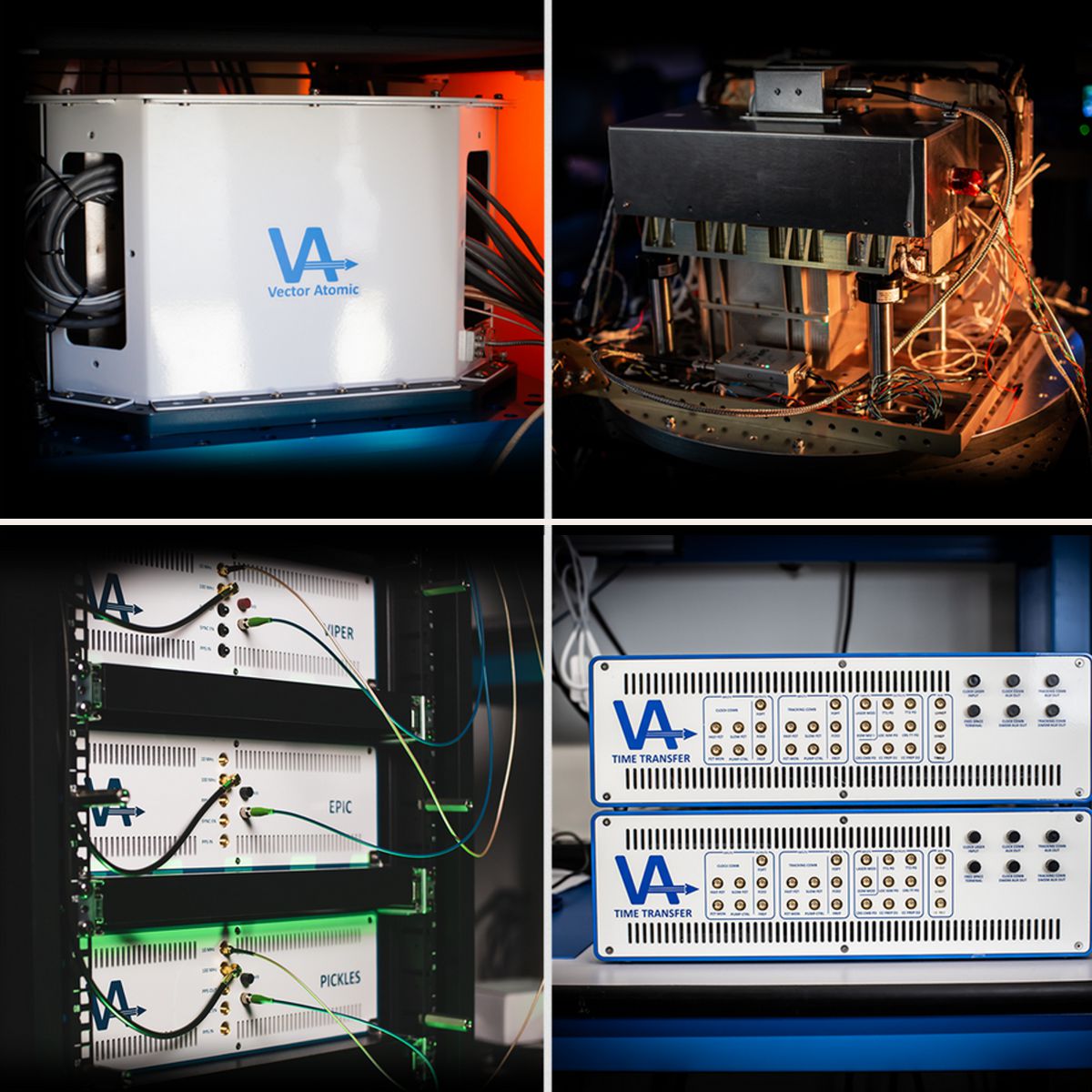Vector Atomic Validates Quantum Navigation Sensor at Sea
Vector Atomic Validates Quantum Navigation Sensor at Sea

Vector Atomic is engineering quantum technology for applications including navigation, communications, and earth science. The company was founded in 2018 to develop and commercialize near-term quantum devices, including atomic clocks and inertial sensors. Vector Atomic hardware has been validated in harsh thermal, dynamic, and radiation environments seen on land, at sea, and in space, according to the company, which has been headquartered at Hacienda since 2020.
Among its many projects, the company is developing atomic inertial sensors for GPS-free navigation and geophysical exploration. In March, at the 2023 IEEE International Symposium on Inertial Sensors & Systems, Vector Atomic presented results from a 20-day at-sea gravity survey using its atomic gravimeter. In GPS-denied environments, ships and submarines rely on onboard inertial navigation systems (INS) to estimate their location. However, even the most precise INS accumulates position errors of 100s of meters per day.
One solution to bound these errors is to fold in measurements of local gravity, which can be matched to satellite-generated gravity maps in the INS navigation solution. Measuring these anomalies requires extreme accuracy, extracting part-per-million changes in local gravity. This challenge is compounded by ship motion; large ocean swells impart additional accelerations as large as a quarter of local gravity, even in mild sea states.
Under the Gravity Assisted Inertial Navigation Systems (GAINS) program supported by the Office of Naval Research (ONR), Vector Atomic has developed an 8 L atomic sensor. GAINS operates in "strapdown" configuration, mounting rigidly to a ship without the aid of motion stabilization, using inertial inputs from the INS to compensate for ship motion and extract local gravity.
To validate performance, GAINS was operated continuously at sea for more than 20 days as part of the TTCP Alternative PNT Challenge at RIMPAC 2022, the world's largest international maritime exercise. Despite challenging operating conditions, GAINS generated high-resolution absolute gravity measurements that matched the satellite maps at the micro-g level (0.000001g), which is within the reported accuracy and discrepancy between available, competing satellite maps. Vector Atomic also successfully fielded three optical atomic clocks with picosecond-level timing error during this exercise./
Beyond navigation, anomalies in Earth's gravitational field provide critical insight into the world below. Depletion of aquifers, rising sea levels, oil and mineral reserves, and underground voids all contain tiny gravitational signatures, and Vector Atomic is developing a corresponding suite of fieldable gravity sensors for Earth science, officials say.
"GAINS is the first atomic inertial sensor we've seen with superior performance to conventional devices that can operate under relevant maritime dynamics with long-term reliability," according to Richard "Tommy" Willis, ONR's Positioning, Navigation, and Timing Program Officer, who oversees the GAINS project. "These results advance the technology readiness level of atomic inertial sensors."
GAINS hardware development and testing was supported by ONR under contract N00014-19-C-1065. The Alternative PNT Challenge was conducted by The Technical Cooperation Program by Five-Eyes partners Australia, Canada, New Zealand, the United Kingdom, and the United States. Vector Atomic officials expressed gratitude to Pennsylvania State University Applied Research Laboratory for supporting hardware integration, testing, and validation.
For more information, please visit www.vectoratomic.com.
Photo by ThisisEngineering RAEng on Unsplash




